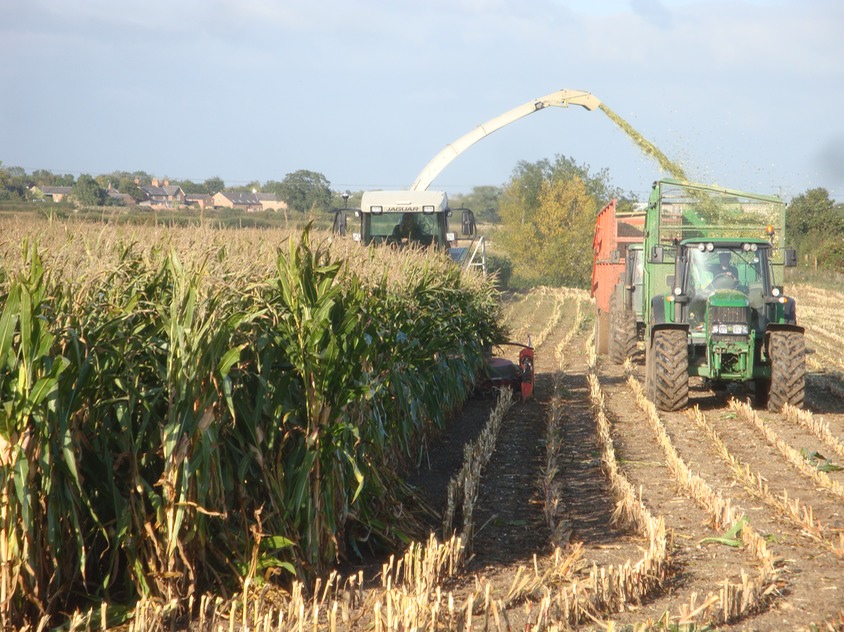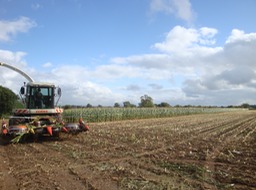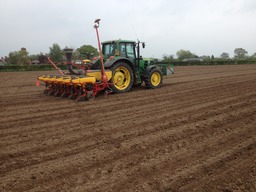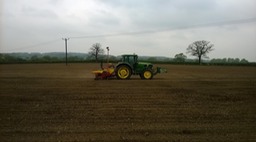
There are thousands of different varieties and it is very difficult to pick one from another, but each variety has its own niche and is always suited to a particular site. Each breeding company has its own best variety that performs well on a range of different sites. There is a list of trials data from the national institute of agricultural botany (NIAB) that is very useful for variety choice. There is the first choice for the favourable sites and the second choice for the less favourable sites. There are varieties that are close to the top on both lists and if soil types vary through the fields, these are the varieties that should be picked out.
There are some breeders that do not enter the NIAB trials, which should not be ruled out either. There is only one way to find out which variety is best for your ground and that is trial and error. Try at least five varieties if you are growing 100 acres or more to give a good comparison and grow the varieties side by side in fields rather than selecting a variety for each field. This is a great way to get a comparison. If the drill man is willing to do a bout of each variety, even better. This way you can make your own trial plots and mark them clearly and monitor them through the growing season. It will soon become clear exactly which varieties are suited the best on your ground. Try not to just grow the varieties that have performed well, always try new varieties that are coming through. Plant breeding is big business, and with each variety taking five to six years of trials to come to the market, there is always the possibility to generate more production from the crop. Varieties are bred for forage, grain and biogas production, some are multi purpose.
To help guide the decision process, the forage maize data is presented in three different ways

- Ranked for earliness of maturuity
- Starch yield
- Metabolisable energy (ME) yield.
Varieties are mostly bred for earliness of maturity. There are three catagories that are
- Late
- Early
- Very Early
There are some hybrids available to be grown at altitudes of 1000 feet. These are the earliest varieties that need less heat units to mature. There is generally more starch in the earlier maturing varieties and more bulk yield and energy in the later maturing varieties, which are usually grown on the more favourable sites. The north west of England from north Shropshire upwards, is considered to be unfavourable due to less heat units, higher rainfall and more marginal soils. The east side of the country is considered to be favourable as far north as Yorkshire due to less rainfall, more favourable soils and more heat units. Growing later maturing varieties on less favourable sites that are not easily accessible in wet weather risks damaging machinery, crop and soil structure. Growing early varieties can be a risk if maize is more than 50% of the ration as this can cause rumen acidosis.
This can be gauged on the variety data list which now includes starch yield (the total quantity of starch produced by each hectare). It also includes starch percentage at harvest.
Starch is important to farmers feeding a ration less than 50% maize as the maize starch rapidly balances out the available energy and higher protien levels found in grass silage. It is also important providing the rumen with fermentable energy which fuels the microbial population in the rumen. A proportion of starch is also absorbed directly by the animal as glucose.
ME is the most important to farmers feeding more than 50% maize in the ration. Growers looking to improve feeding performance and animal output should consider the energy value in mega-joules of each kilogram of dry matter silaged produced. It is directly affected by the starch content and fibre digestability of the plant.
Varieties are also scored for
Early Vigour - The speed at which the plant will establish quickly with a good root system and develop good leaf surface to maximimse photosynthasis and try to shade out and weeds that have germinated.
Standing - This is the most important characteristic of the plant that it will be standing for harvest. Most varieties will stand most weather but fields that are very exposed might be worth growing a variety with a good standing score.




